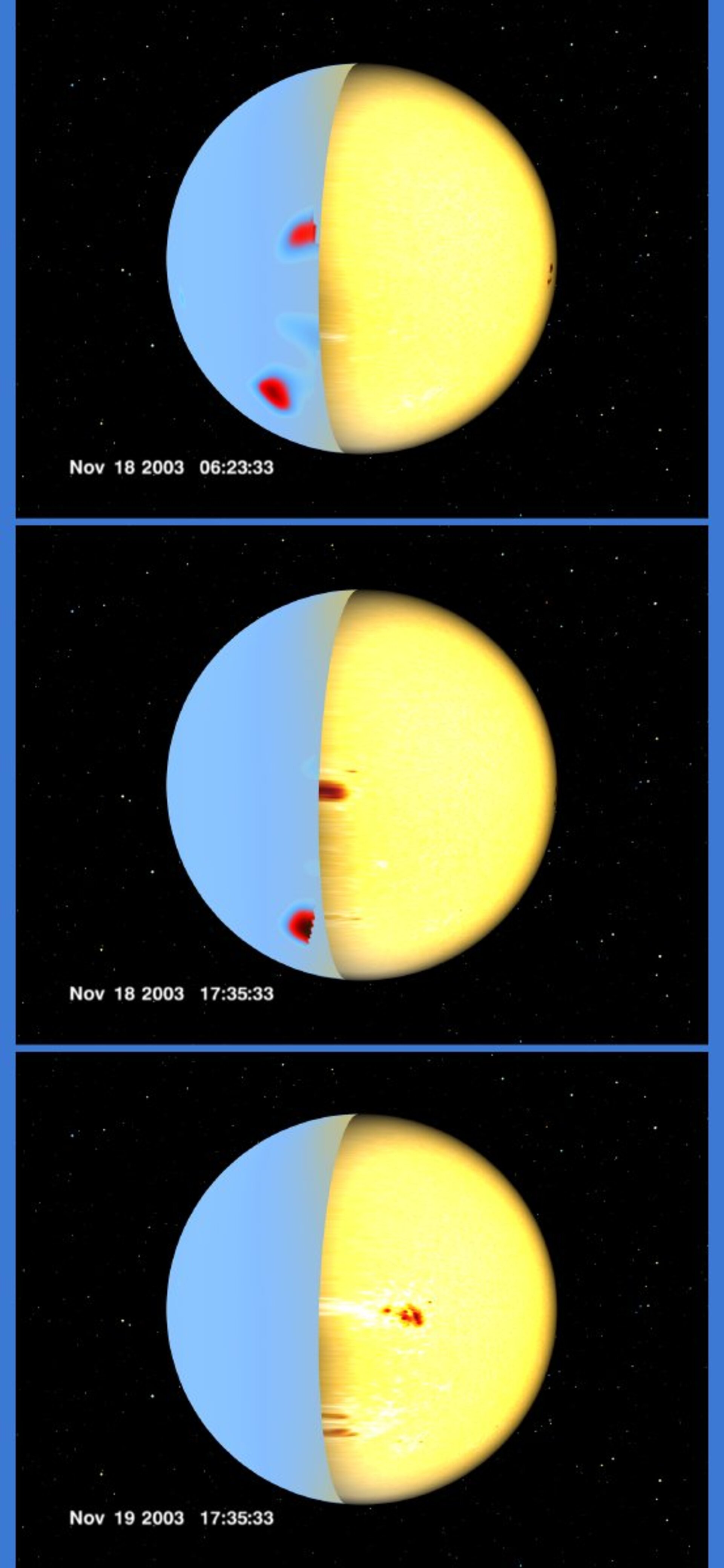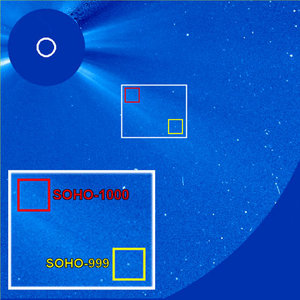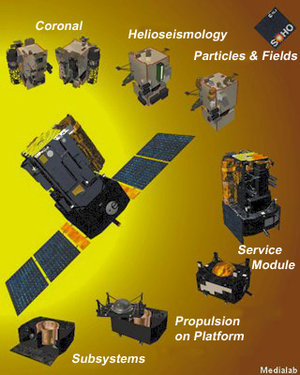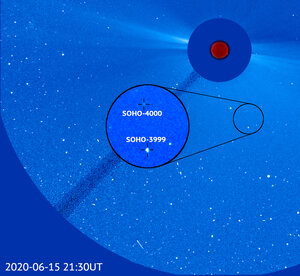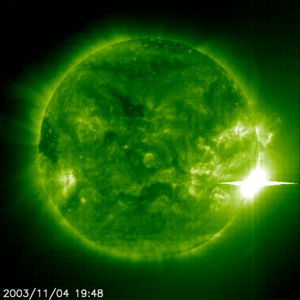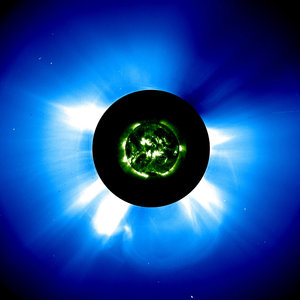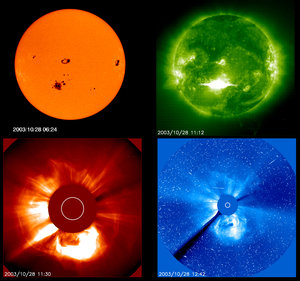Nowhere to hide from SOHO
New research has enhanced a method of seeing through the Sun to image its far side, so that the entire far side is now visible using ESA/NASA's Solar and Heliospheric Observatory (SOHO) spacecraft.
The Sun's far side faces away from Earth, so it is not directly observable by traditional techniques.
"This new method allows more reliable advance warning of magnetic storms brewing on the far side that could rotate with the sun and threaten Earth," said NASA-supported scientist Phil Scherrer of Stanford University, California, USA.
Magnetic storms resulting from violent solar activity disrupt satellites, radio communications, power grids and other technological systems on Earth.
Advance warning can help planners prepare for operational disruptions. The sun rotates once every 27 days, as seen from Earth, and this means the evolution of active regions on the far side of the Sun previously has not been detectable.

Many of these storms originate in groups of sunspots, or active regions – areas with high concentration of magnetic fields. Active regions situated on the near side of the sun, the one facing Earth, can be observed directly.
However, traditional methods provided no information about active regions developing on the other side of the Sun. Knowing whether there are large active regions on the opposite side of the sun may greatly improve forecast of potential magnetic storms.
The new observation method uses SOHO's Michelson Doppler Imager (MDI) instrument to trace sound waves reverberating through the sun to build a picture of the far side.
The Sun is filled with many kinds of sound waves caused by the convective (boiling) motion of gas in its surface layers. The far-side imaging method compares the sound waves that emanate from each small region on the far side with what was expected to arrive at that small region from waves that originated on the front side.
An active region reveals itself because its strong magnetic fields speed up the sound waves. The difference becomes evident when sound waves originating from the front side and from the back side get out of step with one another.
"The original far-side imaging method only allowed us to see the central regions, about one-quarter to one-third of its total area. The new method allows us to see the entire far side, including the poles," Scherrer said.
Scherrer started an effort to use the new method to create full far-side images from archived MDI data collected since 1996. The project was completed in December 2005.
Douglas Biesecker of the National Oceanic and Atmospheric Administration's Space Environment Center, Colorado, USA, said, "With the new far side photo album going back to 1996, we can discover identifying characteristics of active regions. This will improve our ability to distinguish real active regions."
Notes to editors
SOHO is a co-operative project between ESA and NASA.
The far-side imaging method compares the sound waves that emanate from each small region on the far side with what was expected to arrive at that small region from waves that originated on the front side.
For the original method, only waves that rebounded once from the underside of the solar surface on the way to the far side and once again on the way back to the front side were examined. Since each wave makes two dips into the solar interior, going each way, this is called the ‘2-2 skip’ method.
Because of the nature of the waves that can be compared with each other, and the way they travel through the Sun, the bounces need to be all of the same length. This limits the image area to that near the centre of the far side, because if the source of the far-side waves is closer to the edge of the Sun, the second bounce will be outside SOHO’s field of view.
Another technique, called the ‘1-3 skip’ method, was developed in 2001 to create a picture of the far-side edges, but not the centre. As the name implies, it traces waves that travel through the Sun directly to the near side (one bounce) and take three bounces to return. This wave geometry creates a ring-shaped image of the far side, with the centre missing. Matching ‘3-1 skip’ waves are also used.
Both techniques were developed by Dr Charles Lindsey and Dr Doug Braun, both now at Colorado Research Associates, Boulder, Colorado, USA. They realised that if they could combine the two techniques, they could get the full view of the far side.
However, the technical difficulties involved in smoothly joining the two methods were only overcome recently. It is this combined technique, called the ‘1-3 + 2-2 skip method’, that now allows researchers to see the entire far side.
For more information:
Bernhard Fleck, ESA SOHO Project Scientist
E-mail: bfleck @ esa.nascom.nasa.gov


